Month: March 2016
T4 PROJECT 2, BLOG 4 – Inbetweening
Specialisation Research

Disclaimer:
Although the blend of animation and live action could be examined with far greater scrutiny, it will be essentialised due to presentation time constraints.
Gertie the Dinosaur
Let’s start with Gertie the Dinosaur (1914), created by American cartoonist Winsor McCay. While McCay had produced earlier animation, i.e.Little Nemo (1911) and How A Mosquito Operates (1912), his most famous achievement was Gertie the Dinosaur, which had an additional element compared to his previous animations that could be attributed to its renowned success; McCay himself would stand in front of the audience and seemingly interact with Gertie, giving her instructions and commands that she would react to. While this example didn’t initially feature a combination of animation and live-action film, McCay’s performance was eventually edited with title cards so that the entirety of Gertie the Dinosaur could be played in cinemas without McCay being present (Canemaker, J. 2005).
The Alice Comedies
During the 1920’s, the young cartoonist Walt Disney began a series of animated shorts known as The Alice Comedies. These ten-minute shorts featured child actress Viginia Davis walking through an animated world and interacting with the animated characters. Unlike Gertie the Dinosaur, however, Alice was integrated into the animation footage by producing separate film strips for the animation and live action, then filming the two strips overlapping to combine the content (Foster, J. 2010).
The Lost World & King Kong
Several years later we started to see stop-motion animated characters appearing in live action films such as Willis Obrien’s The Lost World (1925) and King Kong (1933). Here we saw the marriage of realism and fantasy, with animated characters such as dinosaurs and King Kong being important parts of the narrative.
In shots where actors and stop-motion characters were both present, actors would be placed in front of a screen where a projector would play the animated portion of the scene in the background. At the time, this technique was so believable that audience members thought that the animated characters were real (Baker, K. 2009).

3D Character Animation
During the next several decades, the 2D and live action fusion continued to be developed, spawning renowned films such as The Three Caballeros (1944), Mary Poppins (1964), Who Framed Roger Rabbit (1988) and Space Jam (1996), however, this technique was nothing new (Heyman, C. 2015). Yet with the development of computers came computer animation, and soon, one of the first fully digital characters appearing in a film. The 1985 film, Young Sherlock Holmes, featured a stained-glass window shattering and forming a knight from the shards, which was digitally composited over filmed footage (Failes, I. 2016). This animation was overseen by visual effects supervisor of Industrial Light and Magic (a VFX studio founded by George Lucas), Dennis Muren.
Young Sherlock Holmes (1985)
Muren then went on to produce CGI dinosaurs for Steven Spielberg’s Jurassic Park (1993), an ambitious and revolutionary feat in producing photo-realistic animated creatures, as the technique had not yet been perfected (Lambie, R. 2014).
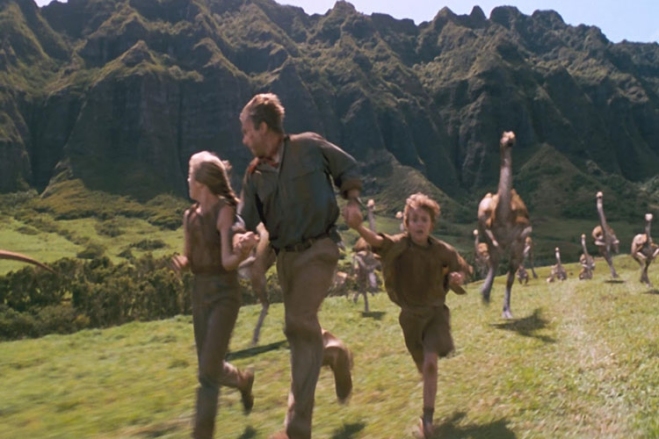
(David Bowie’s Labyrinth (1986) featured the first photo-realistic creature (an owl) during the title credits (Lambie, R. 2014), but that was less impressive.)
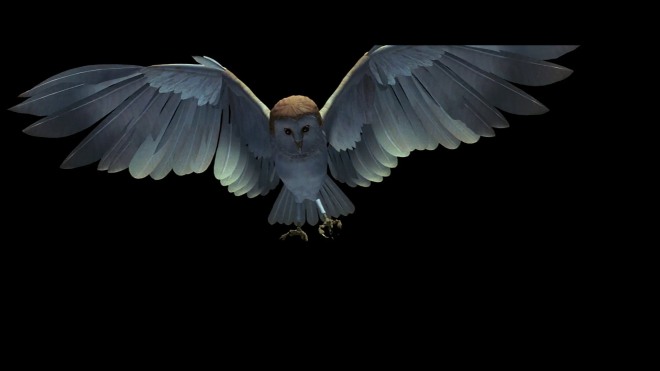
Motion-Capture
Due to technological advances in more recent years, we have witnessed the implementation and perfection of motion-capture techniques which, of course, utilise actors’ movements for animated characters which are captured from sensors and placed onto their character’s rigged model. While there are prior accounts of motion-capture in animation, the earliest crowning example is typically Weta Digital’s Gollum from Lord of the Rings: The Two Towers (2002), (Lyttelton, O. 2014). This technique has now become a common practice for big-budget films and 3D animated characters, blurring the lines between animation and acting, leaving us questioning what animation really is in the modern age (Freedman, Y. 2012).
References:
Baker, K. (2009, April 6). Ancient Rockets: The Lost World. Retrieved from http://www.tor.com/2009/04/06/ancient-rockets-the-lost-world/
Canemaker, J. (2005). Winsor McCay: His Life and Art. Abrams Books.
Failes, I. (2016). Masters of FX: Behind the Scenes with Geniuses of Visual and Special Effects. Burlington, MA: Focal Press.
Foster, J. (2010).The Green Screen Handbook: Real-World Production Techniques. Focal Press.
Freedman, Y. (2012). Is It Real . . . or Is It Motion Capture?: The Battle to Redefine Animation in the Age of Digital Performance. Retrieved from https://muse.jhu.edu/login?auth=0&type=summary&url=/journals/the_velvet_light_trap/v069/69.freedman.pdf
Gorkab. (2015, September 9). Labyrinth – CGI Owl Opening Credits (1986) [Video File]. Retrieved from https://www.youtube.com/watch?v=RbNrkazI-AY
Heyman, C. (2015, December 15). LIVE ACTION AND ANIMATION COMBINATIONS: HISTORY AND TECHNIQUE. Retrieved from http://filmautonomy.com/live-action-and-animation-combinations-history-and-technique/
James, R. (n.d.). The Father of American Animation: Winsor McCay and Gertie the Dinosaur. Retrieved from http://www.artograph.com/infocus/winsormccay/
Lambie, R. (2014, June 18). 100 years of animated characters in live-action film. Retrieved from http://www.denofgeek.com/movies/animated-characters/30956/100-years-of-animated-characters-in-live-action-films
Lyttelton, O. (2014, July 11). A Brief History of Motion-Capture, from Gollum to Caesar. Retrieved from https://www.yahoo.com/movies/a-brief-history-of-motion-capture-in-the-movies-91372735717.html
Movieclips. (2012, February 25). Young Sherlock Holmes (3/9) Movie CLIP – The Stained Glass Knight (1985) HD [Video File]. Retrieved from https://www.youtube.com/watch?v=uOsxXi-tu_U
T4 PROJECT 2, BLOG 3 – START BREAKDOWNS
v1
v2
T4 PROJECT 2, BLOG 2 – ANIMATION KEYS
T4, ASSIGMENT 2: nParticle Swarm
Bee Reference:

Bee Asset:

Swarm Animation:
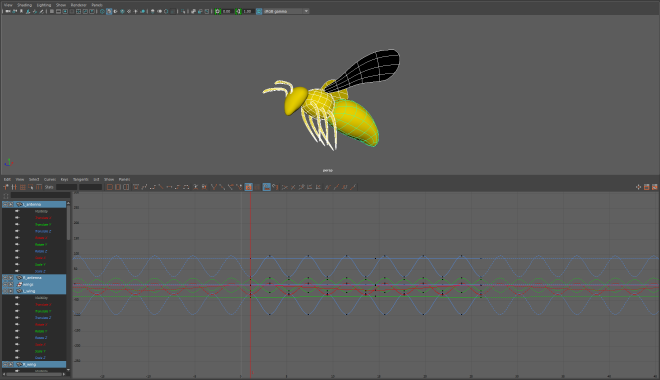
Adjusting the Pre-Infinity and Post-Infinity points to cycle causes the animation to constantly loop.
Creating a basic swarm wasn’t too difficult. Basically, an emitter produces particles which have a locator (parented to the sphere) set as the goal. Adjusting the weight of the goal makes the particles drag behind the locator as if they’re following it.
By replacing the particles with the animated asset, the swarm is complete. Unfortunately, I was unable to make the bee assets constantly follow the locator/direction that they’re moving.
T4 Project 2, Blog 1 – Animation Planning
Model Sheets:
Girl:

Mom:


Mom is based on Carolyn Burnham (American Beauty, 1999).
Reference Video:
Thumbnails:
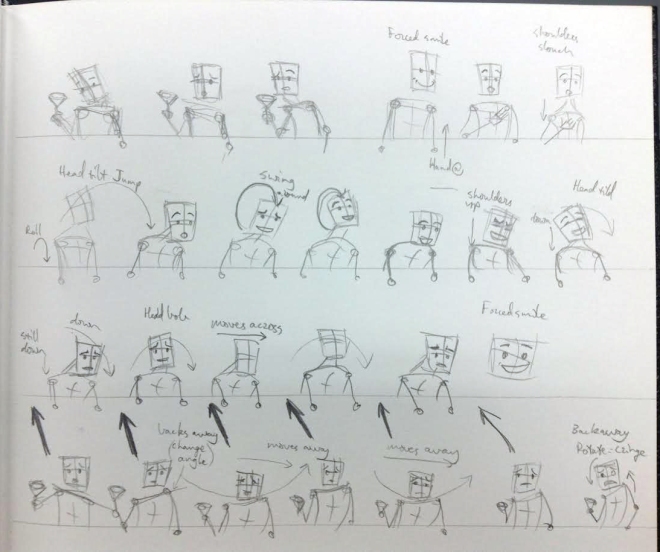

T4 PROJECT 1, PT 5 – Final Assets
Beverage Pouch:
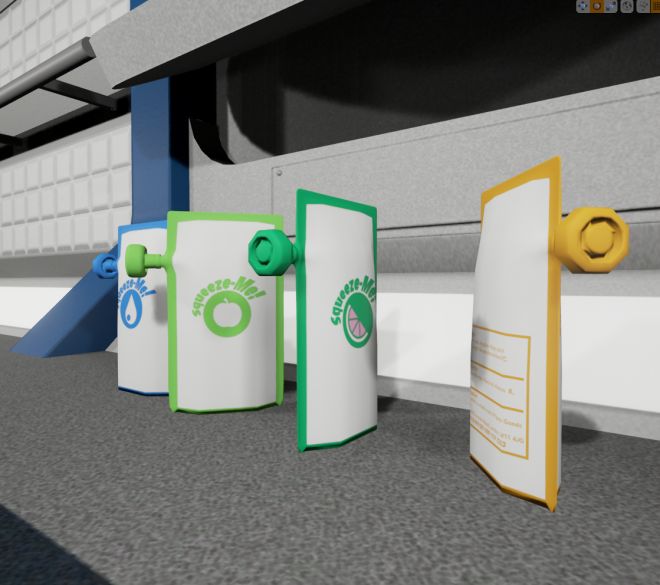
Computer Workstation:

T4, Assigment 1: Celebrity Bust
Sculpture:
Reference Images:
References:
Miley Cyrus Bust [Image]. (n.d.). Retrieved from http://cdn.lolwot.com/wp-content/uploads/2015/07/20-of-the-most-expensive-and-craziest-celebrity-birthday-parties-ever-8.jpg
Miley Cyrus Gif [Image]. (n.d.). Retrieved from http://www.oystermag.com/sites/default/files/images/MMM.gif
Miley Cyrus Haircut Back [Image]. (n.d.). Retrieved from https://lh3.googleusercontent.com/oTynjXbt7Q4nRySQ5k64IFacUy42w0mQI-rNt7mZKPO3a8M6q-fBdvmbYHWXChfgwZvXq-c=s85
Miley Cyrus New Hair [Image]. (n.d.). Retrieved from http://st-listas.20minutos.es/images/2015-01/391859/4752713_640px.jpg?1427649446
Miley Cyrus Side Head [Image]. (n.d.). Retrieved from http://pic.i-imgs.com/wp-content/uploads/1986/10/b2e92d6b15c3eb6ff88b9530378b7c57.jpg
Miley Cyrus Tongue & Hair [Image]. (n.d.). Retrieved from http://cdn1-public.ladmedia.fr/var/public/storage/images/news/photos/photos-miley-cyrus-la-starlette-n-a-jamais-la-langue-dans-sa-poche-435847/photos-miley-cyrus-la-starlette-n-a-jamais-la-langue-dans-sa-poche-440837/5329277-1-fre-FR/Photos-Miley-Cyrus-la-starlette-n-a-jamais-la-langue-dans-sa-poche-!_portrait_w674.jpg?
Miley Cyrus with Tongue [Image]. (n.d.). Retrieved from http://i2.mirror.co.uk/incoming/article2233202.ece/ALTERNATES/s615/Screen-shot-2013-08-28-at-115547.jpg
T4 PROJECT 1, PT 4 – Texturing
Beverage Pouch:
Texture Maps:
Textured Models:
Computer Workstation:
Texture Maps:
Textured Computer Workstation:
In Game:










































